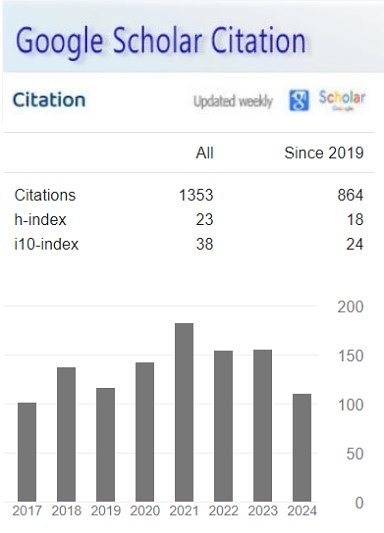Demystifying Google Cloud: A Comprehensive Review of Cloud Computing Services
Keywords:
Abstract
In an era defined by digital transformation, cloud computing has become the fulcrum of innovation and scalability for businesses and organizations throughout the globe. Computers in the cloud can store data on remote servers. It provides companies with comprehensive services intended to propel them into the future. The capabilities of Google Cloud extend far beyond simple computing and include, amongst other things, storage, networking, databases, machine learning, and security. This article is informative and delves into the myriad offerings and features of Google Cloud. The study simplifies the complex world of cloud computing, making it accessible to beginners and seasoned professionals. In addition, we have investigated many real-world use cases to demonstrate how Google Cloud enables organizations to flourish. As the concept of cloud computing undergoes further development, Google Cloud is positioned to remain at the forefront of technological advancement.
References
Baddam, P. R., & Kaluvakuri, S. (2016). The Power and Legacy of C Programming: A Deep Dive into the Language. Technology & Management Review, 1, 1-13. https://upright.pub/index.php/tmr/article/view/107
Datta, S., Bettinger, K., Snyder, M. (2016). Secure Cloud Computing for Genomic Data. Nature Biotechnology, 34(6), 588-591. https://doi.org/10.1038/nbt.3496 DOI: https://doi.org/10.1038/nbt.3496
Kamarinou, D., Millard, C., Hon, W. K. (2016). Cloud Privacy: An Empirical Study of 20 Cloud Providers' Terms and Privacy Policies--Part II. International Data Privacy Law, 6(3), 170 - 194. https://doi.org/10.1093/idpl/ipw004 DOI: https://doi.org/10.1093/idpl/ipw004
Kohlhoff, K. J., Shukla, D., Lawrenz, M., Bowman, G. R., Konerding, D. E. (2015). Corrigendum: Cloud-Based Simulations on Google Exacycle Reveal Ligand Modulation of GPCR Activation Pathways. Nature Chemistry, 7(9), 759. https://doi.org/10.1038/nchem.2272 DOI: https://doi.org/10.1038/nchem.2272
Samuelsen, D. A. H., Pjanic, E., Hasanovic, A., Suljanovic, N., Graven, O. H. (2013). Using Cloud Infrastructure to Support Higher Education: A Case Study of Managing a Course Web Page with the Google Sites. International Journal of Emerging Technologies in Learning (Online), 8(1), 33-37. https://doi.org/10.3991/ijet.v8i1.2367 DOI: https://doi.org/10.3991/ijet.v8i1.2367
Xu, Y., Helal, A. (2016). Scalable Cloud–Sensor Architecture for the Internet of Things. IEEE Internet of Things Journal, 3(3), 285-298. https://doi.org/10.1109/JIOT.2015.2455555 DOI: https://doi.org/10.1109/JIOT.2015.2455555
Yu, L. (2014). "Public Relations" Course Design and Implement Based on Google Cloud. Applied Mechanics and Materials, 623, 262-266. https://doi.org/10.4028/www.scientific.net/AMM.623.262 DOI: https://doi.org/10.4028/www.scientific.net/AMM.623.262
Yue, P., Jiang, L., Hu, L. (2014). Google Fusion Tables for Managing Soil Moisture Sensor Observations. IEEE Journal of Selected Topics in Applied Earth Observations and Remote Sensing, 7(11), 4414-4421, https://doi.org/10.1109/JSTARS.2014.2353621 DOI: https://doi.org/10.1109/JSTARS.2014.2353621
Lal, K. (2015). How Does Cloud Infrastructure Work?. Asia Pacific Journal of Energy and Environment, 2(2), 61-64. https://doi.org/10.18034/apjee.v2i2.697 DOI: https://doi.org/10.18034/apjee.v2i2.697
Thaduri, U. R., Ballamudi, V. K. R., Dekkati, S., & Mandapuram, M. (2016). Making the Cloud Adoption Decisions: Gaining Advantages from Taking an Integrated Approach. International Journal of Reciprocal Symmetry and Theoretical Physics, 3, 11–16. https://upright.pub/index.php/ijrstp/article/view/77
Downloads
Published
How to Cite
Issue
Section
License
Copyright (c) 2016 Asian Journal of Applied Science and Engineering

This work is licensed under a Creative Commons Attribution-NonCommercial 4.0 International License.








